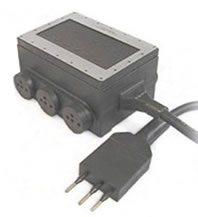
Distribution boxes are commonly used in residential and commercial electrical systems. Also known as a distribution board, it’s responsible for distributing the electrical power throughout the home or building with which it’s used. To learn more about distribution boxes and how they work, keep reading.
Overview of Distribution Boxes
Electricity typically enters homes and buildings from a single line. The main power line connects to a distribution box, which then distributes the electrical power. There are different types of distribution boxes, but they are all designed to distribute electrical power.
How Distribution Boxes Work
Distribution boxes work by distributing electrical power. They receive electrical power from the main power line — or another primary power line — and they distribute it via outlets.
With a distribution box, circuits won’t be overloaded. Circuits, of course, can only support so much electrical power. If a circuit is overloaded with too much electrical power, it will create a fire hazard. Distribution boxes work by distributing electrical power while simultaneously protecting circuits from being overloaded.
What to Look for When Choosing a Distribution Box
If you’re going to buy a distribution box, there are several things you should look for. You should choose a distribution box that’s made of a durable material, for instance. Synthetic rubber is an excellent choice. When made of synthetic rubber, distribution boxes can withstand regular use without damaging or otherwise degrading.
You can find distribution boxes in different configurations. They are available in Navy configurations, for instance, as well as standard industrial U-ground configurations.
Not all distribution boxes have permanent receptacles; some of them have replaceable receptacles. You can remove the receptacles and replace them with other, different receptacles. With replaceable receptacles, distribution boxes are versatile. You can customize them to match your electrical application.
Some distribution boxes have a longer cord than others. When choosing a distribution box, make sure the cord is long enough to reach the main power line. If it’s too short, you may not be able to connect the distribution box.
In Conclusion
Most residential and commercial electrical systems have at least one distribution box. A distribution box is a device that, as the name suggests, is designed to distribute electrical power. It takes the electrical power from the main power line and distributes it throughout the home or building with which it’s used.
